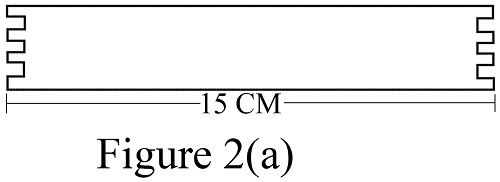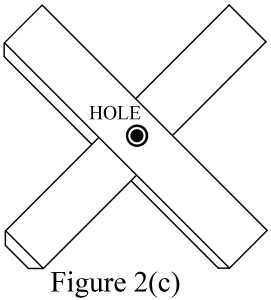Metal detector is a device which is used to detect metallic object like metal coins, iron ore, aluminum or silver and gold etc. Here, we teach you how to make a metal detector circuit with which you can hunt hidden treasure. This simple metal detector circuit can also be used to detect buried cable or concealed wiring. You can also checkout metal detector using arduino.
Description of Metal Detector Circuit
This metal detector circuit is designed using three NPN transistors, IF transformer, search coil and few passive component. The metal detector circuit is basically two oscillators designed using two transistors T1 and T2. One oscillator is working at 455 KHz and other at a slighter lower frequency of 452 KHz. IF transformer IFT1 utilize an oscillator and coil L1 which is here used as search coil utilize other oscillator. Capacitor C4 is use as coupling capacitor and couples these two oscillators. When any metal is taken near to metal detector circuit a beat frequency of 3 KHz is produced which is amplified by using transistor T3 and a loud sound is heard through headphone. A variable capacitor VC1 is used as tuned capacitor.

A search coil comprises 26 turns of wire, centre-tapped. Gauge of the wire can be chosen from 24 SWG to 36 SWG. The construction detail of metal detector circuit is given below.
- Two 150cm long and 2.5cm thick wooden or any other non-metallic piece is taken and grooved should be made as shown in figure.
- A 12.5mm slots should be made in both piece as shown in figure 2(b).
- These both piece is joined together in the shape of cross with a screw.
- Now four ends of the reefers may be grooved to hold the coil firmly and prevent it from slipping while in use.
- After tapping the coil at the centre, the coil may be wrapped with an insulting tape. The search coil is now ready. The prototype of metal detector cirucit is shown in figure 3.
Operation of Simple Metal Detector Circuit:
A metallic object is taken near the search coil of metal detector circuit and switch on the device. Adjust the gang capacitor VC1 till beat note is heard loud and clear through the headphone. The metal detector circuit is able to locate metal buried up to 30cm in earth, provided it is there in abundance. If however, there is a very small quantity of metal buries, it should still be able to detect it up to a depth of 15cm.
PARTS LIST OF METAL DETECTOR CIRCUIT
| Resistor (all ¼-watt, ± 5% Carbon) |
| R1, R2, R4 = 1 MΩ
R3 = 10 KΩ R5 = 2.2 KΩ |
|
Capacitors |
| C1 = 0.5 µF (Ceramic Disc)
C2, C5 = 20 pF (Ceramic Disc) C3 = 390 pF (Ceramic Disc) C4 = 120 pF (Ceramic Disc) C6 = 5 µF, 12V (Electrolytic Capacitor) C7 = 100 µF, 16V (Electrolytic Capacitor) VC1 = 2J gang (250 pF) |
| Semiconductors |
| T1 = BF194 or 2N2926 (Small Signal Transistor)
T2, T3 = BF195 or 2N2926 (Small Signal Transistor) D1 = OA79 (Germanium Diode) |
| Miscellaneous |
| L1 = Search coil of 26 turns of wire from 24 SWG to 36 SWG
IFT1 = IF transformer (green) HP1 = Headphone |




